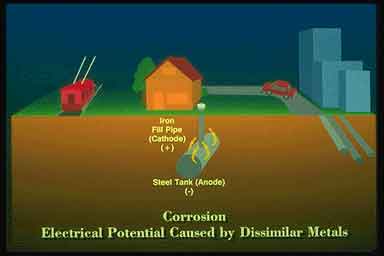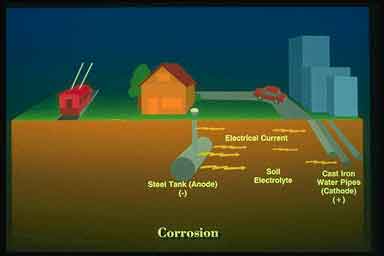
Leaking Underground Storage Tanks
Contaminants
Federal
UST Legislation
State Support
Cleanup Status
UST Definitions
Colorado
Oil Inspect Sec
UST Data
LUST
Anatomy
Corrosion
Leaks
Site Character
Remediation
Source
Groundwater
New Tanks
Installation
Monitoring
Anatomy of a LUST
Typical Gasoline Station Layout
Under a typical gas station are four or five tanks, one each for three grades of gasoline, one for diesel fuel, and one for waste oil. The tanks are filled by tank trucks. "Product" is delivered to the pumps by a system of pipes. Operation of the storage and delivery system is the responsibility of the station operator.

Corrosion
Most of the tanks installed after World War II through the 1980s were bare steel tanks with no defense against corrosion. Corrosion, the oxidation of iron metal to ferric iron, or rusting, of steel tanks occurs by various processes. Chemically, oxidation is the loss of electrons from the iron metal. Some nearby material must be available to accept the electrons lost by the iron metal for oxidation to occur. Some of the possible electron acceptors are portrayed in the images below.




Continued on the next page...

The EPA provides information about operating and maintaing USTs.